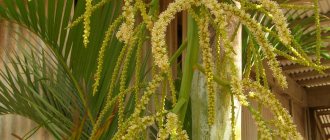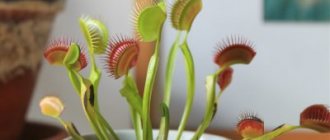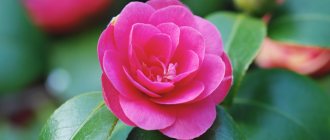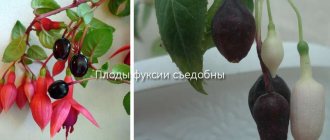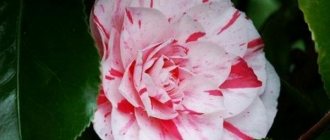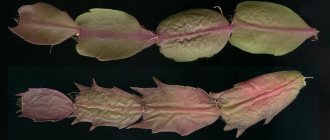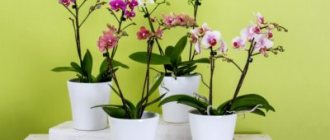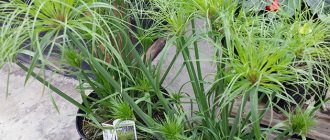Decorative camellia is considered a good gift for any occasion. Its beautiful, large flowers can not only lift your spirits on winter days, but will also become a unique addition to your home interior. Knowing the secrets of caring for and growing camellia at home, you can achieve its good growth and annual flowering.
Also, this wonderful plant, due to its decorative foliage and beautiful flowering, can be grown on a personal plot in regions with a warm climate. Camellia flower. The photo of the plant is striking in its beauty. Experts from the Agronom.guru portal will share with you the secrets of plant care and tell you how to cope with growing difficulties and diseases that are typical for the flower.
Camellia - tea flower for home decoration
What is camellia - a brief botanical information
The evergreen beautifully flowering camellia belongs to the Tea family. The plant is native to the tropics of the East and subtropics of Southeast Asia. In nature, the flower is a shrub or small tree with a loose crown growing up to several meters. They named it in honor of Camellus, who first discovered this plant and brought it to Europe from the Philippines.
The dark green leaves are round in shape and arranged singly or in pairs. The flowers are large and, depending on the variety, colored red, pink, snow-white or variegated. Flowering occurs in winter and lasts until mid-spring.
Camellia can bloom even in the winter season
Types of Camellia domestica with photos and names
The three most common types of camellia are:
- Mountain or Miyagi;
- Chinese or bush tea;
- Japanese.
They differ in a variety of colors, the shape of flowers and petals, their number and texture, as well as the number of buds. The most popular varieties of Camellia japonica that are available to grow have the following characteristics.
Camellia Double White
Snow-white, spherical, double flowers have perfect symmetry. The smooth petals are slightly wavy along the outer edge. The leaves are elongated and glossy.
Camellia Giulio Nucci
It has several types of crimson petals: round or elongated external, small, sometimes twisted into curls inside the flower. Numerous stamens are yellow or white with yellow anthers.
Camellia Margaret Davis
The variety is bicolor, semi-double. The flower consists of two types of petals: rounded on the edge and narrow, white on the inside. They are located close to each other. The rounded white petals have a pink or red border along the edge. Some varieties have crimson speckles.
Camellia Lady Campbell
Tall (up to 1.5 m), well-branched bushes with dark green, shiny foliage and double, peony-like flowers of bright red color. The flowers are large, up to 10 cm in diameter. The leaf blades are sometimes covered with barely noticeable white stripes.
What indoor and garden colors look like in the photo
Camellia flowers are large, single, single or double. Their color can be varied: snow-white, scarlet, soft pink or variegated. The petals may have stains, spots or specks that smoothly transition from one color to another. In shape they resemble roses, peonies, anemones or carnations.
This flower in the interior is impossible not to notice
Catalog of indoor flowers with photos and their names. In a special publication on our portal we will talk in detail about indoor flowers. You will learn the types of indoor flowers, about fruit indoor flowers and get acquainted with the photo gallery.
Garden plant option
Determine the name of a garden flower from a photo. In a special publication on our portal we will talk in detail about garden flowers. You will learn about the types of garden flowers, perennials that winter in open ground and look at the photo gallery.
Difficulties in growing
Japanese camellia is considered a rather capricious flower, so it is not always possible to properly care for an adult plant or get another one when propagating.
Diseases
Pests appear in this crop only when care rules are violated. It is most susceptible to attack by tea moths, spider mites and whiteflies. When they appear, you will have to use a special insecticide.
Among the diseases in camellia, only chlorosis occurs, in which case the leaves turn yellow. Heavily damaged areas are removed, and the remaining parts are treated with a special pest repellent.
Features of varieties: mountain, Japanese, Chinese and Middlebury pink
Breeders have developed a large number of varieties and hybrids that are popular for growing at home and in the garden. The most common of them are presented below.
Camellia montana , or flower of the winter sun. This variety came from Okunawa Island. In nature it is a shrub reaching up to 5 m in height. Thin flexible branches are covered with red fibers. The leaf blade is wide and long, oval-shaped and dark green in color. The flowers are large, reaching up to 7 cm in diameter, have a white, red or pink color with an unforgettable aroma. Their color and shape depend on the type of mountain camellia.
Blooms in gardens and indoors in cool climates from November to March.
Japanese camellia . This species grows in Korean and Japanese forests as a shrub growing up to 13 m in height. Flowers can be single, double or semi-double depending on the species. Color of inflorescences: from white to all shades of scarlet and pink. The flowers are similar in shape to a rose, peony or anemone, but without a distinct aroma. They bloom from the axils of the leaves, forming a chic, beautifully flowering crown. Flowering occurs in late autumn and lasts until mid-spring. Each flower stays on the plant for up to 30 days. At home, Japanese camellia, with good care, grows up to 1 m. This variety has many types. The most common:
Alba Simplex
Pink perfection
Camellia Japonica Easter Morn
Debbie
Callifornia Dream Girl
Chinese camellia , or bohea. This variety is known as the tea tree, the leaves of which are used to make black or green tea. In natural habitats it grows on mountain slopes, gorges and forests of China. The plant can reach several tens of meters in height. The leaves are large, ovoid, and when young they have a white waxy coating with a silver fluff. Long tea varieties are made from young leaves, and the flowers are used as an aromatic additive.
This variety is grown very rarely as a houseplant, as it requires proper care.
Camellia middlebury rosea . The rarest variety with soft pink flowers that bloom in mid-autumn. The inflorescences are large, double, odorless. The petals are neatly arranged in the form of tiles. Flowers fade gradually, while maintaining rich color. Thanks to this, the plant always looks neat and well-groomed.
Flowering begins in mid-November and continues until mid-March
Varieties
There are many varieties of Japanese camellia, but the most popular are:
- Vittorio Emanuele II is a variety with semi-double buds, which consist of slightly convex petals bent in the opposite direction. The color of the buds is white-pink with rich longitudinal stripes of crimson or pink on each petal.
- Guilio Nuccio - characterized by crimson buds on which there are 2 types of petals - large round petals are attached in 2-3 rows, and in the center of the bud there is a small lush “cap” of small oblong petals.
- Double White - has double flowers of snow-white color, with spherical petals that are attached to the base in a clear checkerboard pattern, which is clearly visible when the bud is completely open.
- Desire is a variety with semi-double buds, has a two-color color: white on the inside, pink on the outside, with a smooth color transition.
- Margaret Davis - characterized by the presence of two-color semi-double buds. The petals located on the outside of the flower are round in shape, large in size and white in color, which at the edges turns into a bright crimson torn border. The inner petals are small, often closed, covering the center of the bud; they also have a crimson border, but not so bright.
- Lady Vansittart Pink is a variety with smooth flowers, characterized by an elegant bud shape. There is a clear geometry in the arrangement of the petals; in the center of the bud there are long yellow stamens, surrounded by 3 petals; under them, in a checkerboard pattern, are the remaining rows of petals, which form a medium-sized flower. The petals are white-pink with darker veins, some petals have bright crimson splashes.
- Chandlers Red is a variety with bright red buds and heart-shaped petals. The lower 2 rows of petals are large and slightly bent outward. In the center there are small oval petals, creating a lush “cap”. Externally, the flower resembles peonies.
- Asahi-No-Mai is a smooth-flowered variety with bright red wide petals arranged in 1-2 rows and a large dense center with bright yellow stamens.
- Tricolor - characterized by semi-double flowers, the petals are white-pink in color, with a small amount of red splashes and ragged thick stripes of scarlet color. In the center of the flower there are sparse long yellow stamens.
- Pink Perfection - considered one of the most beautiful varieties. It has double buds of soft or bright pink color, which consist of petals slightly bent in the opposite direction. The bud shows a clear geometry of the arrangement of the petals; in the center of the bud the petals are closed and resemble an unopened peony bud.
How to care at home
Camellia is a very capricious plant, and if you do not know all the rules of care, the flower can quickly wither and die.
Air temperature and humidity
In order for the plant to delight with its flowering, it must be protected from drafts and sudden changes in temperature. In winter, the air temperature should be kept within +12°C. Therefore, it can be placed on an insulated loggia or balcony. In the spring-summer period, when the plant enters the active growth phase, the air temperature should be about +25°C. At the end of summer, when flower buds begin to form, it is reduced to +18°C.
Air humidity also plays an important role in plant care. Camellia prefers moist air, so install a humidifier next to the plant or pour wet moss or expanded clay into a tray. Also, the flower must be periodically sprayed with warm, settled water.
When spraying, water should not get on the buds, as this will lead to the dropping of buds and flowers.
High air temperature during the formation of buds will lead to their discarding
Location and lighting
For good camellia growth, bright, indirect light is needed. To do this, it is placed on the western or eastern side. In the open sun, the flower will suffer from excess light and begin to shed foliage and buds. And on the north side it will need additional lighting.
Mountain camellia can grow in full sun, while Japanese camellia prefers partial shade.
How to feed and water
This flower needs a lot of water, only after the top layer of soil has completely dried. Watering should be carried out with settled warm water strictly at the root. The best option for watering would be rain or melt water, since it contains those microelements that are so necessary for indoor plants. In winter, watering is reduced to avoid soil acidification. The first sign of souring is that the leaves turn brown and the buds fall off.
Before flowering, the soil in the pot should be slightly dry
In the spring, when intensive growth of young shoots begins, camellia needs feeding. For this purpose, complex fertilizers are suitable, which are specially designed for flowering indoor plants.
You need to dilute the concentrate twice as much as indicated in the instructions.
At the end of summer, when the plant begins to prepare for flowering, fertilizing is completely eliminated.
Camellia needs to be fertilized once every 10 days.
Which soil to choose
Camellia prefers acidic, well-drained and nutritious soil. Peat soil can be purchased at the store. And to make the soil more loose, you can add pine needles, perlite or crushed tree bark to it. You can increase acidity using citric or oxalic acid.
Camellia prefers light, permeable soil.
How to replant: step-by-step instructions with photos
A young tree must be replanted once a year. Adults – once every 4 years. In order not to damage the delicate root system, the plant is replanted using the transshipment method.
| Photo | Action |
| For annual flowering, an adult camellia needs to be replanted every 3-4 years. | |
| To make the plant feel comfortable, you need to take a larger pot. | |
| Place a 2-3 cm layer of drainage on the bottom of the pot. | |
| To avoid damaging the root system, remove the plant from the pot along with a lump of earth. | |
| Place the flower in the center of the prepared pot and fill the voids with nutritious soil. | |
| The soil can be purchased at the store; it should be nutritious, well-drained and permeable. | |
| After transplanting, compact the soil and place the pot in a warm, bright place. |
Replanting must be done carefully so as not to damage the root system.
Transfer
Camellias are replanted not in February-March, like other indoor flowers, but in late autumn or winter. She begins a period of rest, coinciding with flowering. Therefore, you can replant a flowering plant, being careful. Young plants need to be replanted every year. Large bushes can be replanted by transshipment once every two to three years, when the roots fill the entire volume of the pot.
In preparation for transplanting (planting), it is necessary to prepare a wide pot, at the bottom of which a layer of drainage is poured. You can buy land ready for azaleas and camellias. Since different manufacturers allow deviations in the composition, when purchasing a ready-made earthen mixture, you should pay attention to the presence of the following components in the soil:
- peat;
- sand;
- leaf soil;
- vermiculite.
You can prepare the mixture yourself by mixing peat, sand, leaf and coniferous soil. All ingredients are taken in equal parts, and sand - half as much. The soil must be loose to prevent stagnation of water. Soil acidity should be between 4.0–5.5 units. To increase its permeability, it is recommended to add ground coniferous tree bark. Its pieces are usually sold for planting orchids.
This may be interesting: Muraya - growing from seeds at home
When replanting a flower, you should pay special attention to the root collar, which should not be covered with soil, but be at ground level. When transferring an adult plant to a larger pot, add fresh mixture. If it is necessary to increase the acidity of the soil, mulch it on top with sawdust or small pieces of bark.
Caring for a flower in the open ground
Nowadays, breeders have developed many varieties of garden camellia that grow well in open ground even in regions with harsh climates. But in order to achieve success in growing and see flowers on a garden plant, you need to put in a lot of effort and patience.
Soil preparation and planting
Growing camellias in the garden should begin with preparing the soil. Since garden soil is dense and does not allow water and air to pass through well, it needs to be slightly improved. To do this, make good drainage, acidify the soil and add peat, sand and compost. It is better to plant a flowering camellia in a permanent place, since at this time it is in a dormant period and, with the accumulation of strength, will tolerate transplantation much better.
How to properly transplant camellia into open ground:
- The purchased plant is carefully removed from the container, trying to preserve the earthen lump.
- When installing a plant in a hole, you need to make sure that the root collar is not too deep into the ground. But you shouldn’t leave it close to the surface of the earth, as there is a possibility that the plant will not survive the winter.
- After transplantation, the soil is compacted, watered and mulched.
- If several plants are planted, the distance between the holes should be at least 2 m.
Camellia is planted in a pre-diluted hole
Caring for garden camellia
Caring for camellia planted on a personal plot consists of timely watering, fertilizing and pruning.
Watering and fertilizing
Garden camellia is very demanding on water quality. You cannot water the shrub with tap water, as it contains a high lime content. In hot summers, the plant is watered 2-3 times a month. The first sign of a lack of moisture is the leaves drying out and falling off. In rainy summers, no watering is required.
Tree camellia is an ideal solution for landscape decoration
In the spring, during the period of active growth of young shoots, garden camellia needs to be fed twice a month. Feeding must be of high quality. Fertilizers intended for feeding azaleas are suitable for camellias.
The plant should not be overfed, as this will lead to intensive growth during the dormant period.
In the autumn, feeding is stopped, and the bushes begin to be prepared for wintering.
In regions with harsh climates, the plant is dug up and stored indoors
How to prune to form a crown
They begin to form the crown in the spring by pinching the shoots. This is necessary for better branching of the bush. In autumn, shoots are pruned to stimulate the growth of axillary buds.
With annual pruning, camellia turns into a beautiful flowering shrub.
Pruning is carried out with a sterile sharp instrument
Preparing for winter
If camellia grows in a region with harsh winters, it must be dug up and wintered in a room where the air temperature will not drop below +2°C. In regions with a mild climate, the plant is covered with breathable material.
Subtleties of care
Camellia is one of the plants that requires certain conditions to be successfully grown. Therefore, let's talk about how to grow camellia in city apartments and make it bloom. When you see a flowering plant on sale, you feel the desire to purchase a luxurious flower. But often such a purchase ends in the death of the plant after flowering ends.
Creating a comfortable temperature regime
The most important thing is to ensure temperature conditions, because for normal development a flower needs conditions close to natural. For flowering in winter, camellia is recommended to be kept at a temperature of 10-15 degrees. It can withstand slight sub-zero temperatures. It is impossible to maintain coolness in an apartment with central heating. But if you have a glazed, insulated loggia, balcony or cool veranda in a private house, then you can admire the flowering plant all winter. In summer, camellia prefers moderate temperatures in the range of 20-25 degrees.
Camellia is demanding on lighting, so with short daylight hours it is necessary to provide it with additional lighting. As a result, daylight hours should reach twelve to fourteen hours. When placing a flower on a window facing south, you need to take care to protect it from direct sunlight and moisturize it. The most suitable would be an eastern or western window, where the camellia is not threatened by the hot midday sun. On a window facing north, the plant shreds and stretches out.
This may be interesting: Oxalis (Oxalis) - types and varieties
Watering, moistening and fertilizing
Camellia is one of the flowers that begins to grow shoots in the spring. At the beginning of autumn, buds are laid and flowering occurs in winter. Therefore, watering and the application of mineral fertilizers must be organized taking into account the annual growth cycle. Camellia needs bottom watering through a tray, draining the remaining water after an hour and a half.
In the spring, when new shoots begin to grow, and in the summer, camellias need to be watered frequently and abundantly. But the soil should not be allowed to become waterlogged, because this will lead to rotting of the roots. In winter, watering is reduced to once a week. Camellias are harmed by an increase in calcium salts in the soil, so the water must be settled. You can use melted or boiled water. Sometimes it is recommended to add a small amount of vinegar or citric acid to the water to increase the acidity of the soil.
Camellia needs air humidification, especially if the pot with the plant remains in the apartment for the winter. Hot radiators dry out the air greatly, which can lead to buds and leaves falling off. Therefore, the foliage is periodically sprayed without moistening the soil. You can place the pot in a tray with damp expanded clay or moss. If possible, we recommend installing a humidifier, which will create a comfortable microclimate not only for the flower, but also for people.
In the spring, when young shoots begin to grow, you can start feeding camellias. To do this, use fertilizers for azaleas. The amount indicated on the package is halved. Fertilize no more than 1-2 times a month. In July, fertilization is stopped until next spring. When choosing fertilizers, you should pay attention to ensure that they do not contain calcium and magnesium. Excess calcium in the soil causes buds to fall off.
Crown formation
In order to give a compact shape and remove weak shoots, camellias are pruned. This procedure is performed at the end of flowering. After pruning, the plant produces new shoots more actively. Flower growers who have been growing camellia for many years already know how many shoots need to be left so as not to weaken the bush with abundant flowering.
By cutting shoots, you can form a bush or tree. After pruning, the cut of large woody branches is treated with garden varnish. It is permissible to trim shoots to half their length.
Important! During the formation of buds, we do not recommend rearranging or turning the pot, otherwise the plant may drop the buds.
How does it reproduce
Camellia can be propagated in two ways: cuttings and seeds.
Propagation of camellia by cuttings: step-by-step instructions with photos
| Photo | Action |
| Camellia is best propagated by lignified cuttings, which are cut in mid-summer. The cutting must be at least 8 cm long and have 5 leaves. Before rooting, planting material must be treated with a root formation stimulator. | |
| The seedling is placed in prepared soil consisting of moistened sand and peat in a 1:1 ratio. Before it is buried in the soil, it must be treated with a phytohormone. This is necessary for better soil heating. | |
| For rapid rooting, the air temperature must be more than +25°C. To maintain a favorable microclimate, place a plastic bag or glass dome on the pot with the seedling. Under such conditions, the cuttings will germinate in 60 days. |
Sowing seeds
The seed propagation method is simple, effective, but time consuming. Seeds are sown in a moist substrate consisting of sand and peat, the container is covered with polyethylene and put in a warm, bright place for germination. The duration of this process depends on the conditions, and it can last from several months to a year.
As soon as the first shoots appear, the film is removed, the seedlings are watered and planted. Each plant is planted in separate pots with a volume of at least 7 cm. Camellia grown from seeds is more adapted to sudden temperature changes and grows much faster.
A plant grown from seeds begins to bloom in the 5th year.
The ripe seed pod is dark brown in color.
Reproduction
Camellia propagation is carried out in several ways:
- seeds;
- cuttings;
- layering;
- vaccination.
Growing from seeds
Camellia seeds
Seeds appear on a faded bush in the fall. If you want to start growing from seeds, they must be planted soon after collection, before they lose their viability. Unfortunately, in apartment conditions, camellia practically does not produce seeds. They are obtained either in natural conditions or in greenhouses. Therefore, you can buy seeds in flower shops, but there is no guarantee that they will sprout. Additionally, if the plant is grown from the seeds of a hybrid plant, it may not inherit all the traits and the flowers will look different from the parent. And the representative of the species, Camellia sinensis, transmits its characteristics when propagated by seeds.
Let's look at the steps for planting seeds:
- Ripe seeds should be dark brown, almost black. The main thing is that the purchased seeds do not dry out, so before planting they can be put in a bag and placed in the refrigerator. Before planting, the seeds are dipped in water. If they surface, it is not recommended to sow them.
- Before planting, it is enough to soak fresh seeds in water overnight. We recommend scarifying dry seeds to speed up germination. This can be done in two ways. The first is to cut or pierce the shell of each seed, being careful not to damage the core. The second method is to alternately immerse it several times for a few seconds, first in boiling water, then in cold water.
- A planting mixture is prepared from equal parts of peat and sand. You can take soil for azaleas and camellias. The seeds are placed in the soil, slightly pressing. Place each seed with the “eye” from which the root will appear, down or to the side. You can sprinkle a thin layer of sand or vermiculite on top.
- Propagation by seeds requires careful adherence to temperature conditions. The pot is placed in a place with a temperature of 23 degrees. It is also covered with glass and cellophane to maintain humidity. It is also necessary to provide slight shading from sunlight.
- It will take several months for the seeds to germinate. After the second leaves appear on the sprouts, they are planted in separate pots, picking. Camellia grown from seeds is characterized by good adaptability to new conditions. Flowering of a young plant occurs after approximately five to eight years.
Planting seeds
Growing from cuttings
It is easier to grow a flowering plant using cuttings, which are taken in late May - early summer. At this time, the shoots turn brown and are ready for cuttings.
You cannot take green shoots, as they will not take root. It is worth paying attention to ensure that the growth bud is well developed. The soil is taken the same as for camellia seeds - a mixture of peat and sand in equal proportions.
Rooted cuttings
Before planting, it is recommended that the end of the shoot, which goes deep into the ground, be dipped wet in a rooting powder, for example, Kornevin. There are other rooting agents on the market, so don’t stop at Kornevin only. The soil should be moist, and it is recommended to cover the planted cuttings with film or a jar to maintain the humidity level. Four months are enough for cuttings to root. During the rooting period, it is necessary to maintain a constant temperature of 23 degrees. At higher temperatures, leaf growth may begin, and the root system will be delayed in development, and the sprout may die. Flowering occurs after two years.
This may be interesting: Catharanthus - care and propagation at home
Reproduction by offspring
Root shoots that appear in an adult plant and have reached a sufficient size, when transplanted, are separated from the parent bush and planted in a separate pot. This is one of the simplest methods of reproduction, but you have to wait a long time for the offspring to appear and develop.
Reproduction by grafting
Camellia grafting is performed using two methods:
- butt;
- splitting
The butt drive makes it possible to achieve propagation for camellia species that do not root well from cuttings. The root system of the scion is preserved until its complete survival.
Reproduction by grafting
Camellia is also grafted using a new method specially developed for it. A cutting is taken for rooting and a shoot grown from seeds. The shoot must be at least five centimeters. Its root is split and cut off at the level of the cotyledons. The cut is split and the tip of the cutting is inserted into it. Rooting of cuttings is carried out in pots in soil consisting of peat and sand (1:1 ratio). The pot is covered with cellophane and a jar.
Diseases and pests
When growing camellia, gardeners often encounter some problems. The most important of them are diseases and pests.
Yellow spot . The leaf blade is covered with yellow spots of irregular shape. At the initial stage of the disease, damaged leaves are removed and the plant is quarantined.
Phyllostictyosis. Brown spots of various shapes appear on the leaves. This disease can appear with high air humidity. For the plant to recover, it is necessary to regulate the humidity, remove all affected leaves, and before the onset of cold weather, the plant is treated with copper sulfate.
Weevil-mower. This insect can be recognized by its leaves. The edges of the leaf plate are gnawed, and the plate itself loses color over time, dries out and falls off. The insect lays larvae in the ground. Adults are the most dangerous, as they very quickly damage the root system, which leads to the death of the plant. Treatment consists of treating the flower with a solution of “Fly-eater” or “Medvedka”.
Shield. Damages young shoots, forming golden-brown tubercles on them. You can fight the pest by wiping the leaves with kerosene.
Mite. The insect appears when growing shrubs in a room with high temperature and low air humidity. When infected by this insect, the leaf blade becomes covered with yellow spots, which quickly grow without treatment. You can get rid of ticks using insecticides.
How to get rid of midges in indoor flowers using simple methods. In a special publication on our portal, we will talk in detail about how to get rid of pests in indoor plants. You will learn the reasons for their appearance, the types of midges and their signs and measures to prevent the appearance of midges.
Conditions for successful growing at home
Ignorance of the basic nuances of growing camellia japonica often causes the death of a flower. We list the optimal indicators of the indoor microclimate and the rules for choosing a suitable place to place the pot.
Lighting
Choose a place to install a pot with an indoor flower that is well lit, but protected from direct sunlight. Windows facing west or east are suitable for placing the flower. If you plan to place the plant on a south-facing window, it must be shaded.
Important! The plant will not be able to exist normally on northern windows. Even if it grows, flowering will not occur.
The leaves may grow unevenly, and the shoots may lean towards brighter lighting, so it is recommended to periodically turn the pot in different directions. When buds form on the plant, do not turn the pot - any changes in lighting can cause the buds to fall off.
Ventilation
Regular ventilation of the room is the key to the health of the plant, since pathogenic microorganisms accumulate in stagnant air, and the risk of developing flower diseases or damage to its parts by pests increases. To minimize risks, the room is ventilated daily for 1–2 hours.
In summer, it is better to take the camellia outside or onto an open balcony, protecting it from drafts or strong winds.
Temperature
For flower development in the summer season, the air temperature in the room must be maintained at +20...+25°C; in winter it is important to maintain +10...+15°C to allow the camellia to form buds.
Important! If in winter the air temperature exceeds the specified values, the buds may fall off before they begin to bloom.
Air humidity
Japanese camellia suffers from dry air. The problem manifests itself in winter, during the heated period, when artificial heat sources dry out the air. The optimal humidity for camellia is 60–75%.
To increase the humidity in the room, use containers with wet expanded clay or place sphagnum moss near the trunk of the plant and spray it regularly. Evaporation from expanded clay or moss can provide the required level of humidity and keep the flower healthy.
Mistakes of novice gardeners
- Camellia sheds its leaves - very dry soil. Watering time is determined by the condition of the soil; if the soil has dried out by 5 cm, then the plant needs moisture.
- The leaf blade becomes brown, and unopened buds fall off - the shrub is overflowing. In this case, the plant is transplanted into a new substrate.
- The leaves turn brown due to sunburn. The flower grows best on the east or west side.
A capricious plant - camellia
Camellia is an ornamental plant with a long flowering period. It will perfectly complement both your home interior and will be indispensable in landscape decor. In order for a shrub to delight with its flowering, it is necessary to surround it with care and love.
Kinds
Mountain Camellia / Camellia sasanqua
Or Camellia miyagii or Camellia tegmentosa. This species is native to. Okinawa and o. Kyushu. These shrubs grow in height from 3 to 5 m, the branches are thin, and the shoots are covered with red hairs. The leaves reach a maximum of 7 cm in length and 3 cm in width; the shape of the leaves is elongated-ovate or elliptical with denticles along the edges; the upper side of the leaf is dark green and glossy; on the underside the midrib is pubescent. The simple fragrant 7cm flowers grow singly or in groups of 2-3 and are red, pink or white. The period of abundant flowering is from November to January. They grow best in cool rooms.
- How to grow cacti in a garden where winter temperatures drop below -20°C
Camellia sinensis / Camellia sinensis
Or Camellia bohea. It grows in gorges, on mountain slopes and in the forests of China. These trees or shrubs grow up to 15 m in height. The leaves are up to 10 cm long and up to 4 cm wide, elliptical or ovoid in shape, glossy and dark green on the upper side; young leaves are covered with white hairs, while mature leaves are glabrous. White axillary flowers grow on short stalks of 1, 2 or 3 pieces.
Japanese camellia / Camellia japonica
This species can be found in Japanese, Chinese and Korean forests. These trees or shrubs grow up to 15 m in height. The leaves are pointed at the top and jagged along the edges, leathery to the touch, dark green in color, glossy. They have the shape of an egg or an ellipse, reaching a maximum length of 10 cm. Simple 4-centimeter flowers grow several or singly, they are double and semi-double; the color is pure red, pink or white, and there are also variegated leaves. The flowering period is from December to April.
Care, cultivation and maintenance
There are only a few aspects, but every gardener should know them.
Watering and fertilizing
Watering is one of the most important aspects in camellia care, and here it is important to adhere to three rules:
- Do not use hard tap water.
- Do not water with cold water.
- Avoid excess moisture in the soil.
In the first half of the year (from January to May) it is better to use warm water for irrigation. If there is a need to maintain the required humidity around the flower, you can spray without touching the buds and flowers. You can also place a wide container next to the camellia and fill it with water.
Closer to summer, the intensity of watering is reduced, the camellia is not sprayed, but the soil under the plant is not allowed to dry out. By the beginning of autumn, the camellia is again watered more actively, and with warm water, while making sure that there is no waterlogging.
For irrigation, you need to use only soft water, and tap water must be settled or boiled
What water is best to use for camellias? Rain and melt water are excellent, but since it is not so easy to get on a regular basis, you have to use tap water. And in this case, it must be settled or boiled so that it becomes softer.
Another very important factor for the growth and development of camellia is timely feeding. But in this matter it is important to follow the principle of “do no harm.” Fertilizers should not affect the acidity of the soil, and you should not always follow the instructions exactly, especially if the fertilizer is not designed specifically for camellias. Camellia is in great need of chemical elements such as nitrogen, sulfur, zinc, manganese, copper, boron, potassium and phosphorus. Eliminate fertilizers containing magnesium and calcium - camellia already receives them with tap water, and an excess of these elements will reduce the acidity of the soil and make it alkaline. For the same reason, manure is not used. But nutritional complexes specially developed specifically for camellias, as well as fertilizers for azaleas, are of great help.
It is worth noting that all fertilizers are applied in liquid form and only after the soil is moistened.
Recent Entries
Lilac perennials that are beautiful, compact and do not crowd out other plants Why when buying seedlings you should not take the sellers’ word for it and how to determine the age of the plant using 3 signs Tomato seedlings have turned purple or whitish: why the color has changed and how to save the plants
The best time for feeding is the end of winter and the beginning of spring, when camellia finishes flowering and comes out of dormancy. During this period, active vegetative processes begin, and feeding comes in handy. The period for applying fertilizers ends in July, and it is contraindicated to apply them in the fall, especially if you are trying to acclimatize a frost-resistant camellia on your windowsill.
Camellia can be sprayed to increase humidity levels without disturbing the flowers.
Bloom
The best thing about growing any camellia is its flowering, which begins with the onset of winter. Some varieties begin to bloom buds in November. During this period, the plant is covered with flowers from top to bottom. During this period, it is very important to cut off excess buds so that the camellia does not put too much strain on itself. Of course, she will shed the extra flowers herself, but at the same time the rest may become smaller. That is why it is recommended to leave no more than two buds on each shoot. There is no need to trim the flower stalks after flowering.
During flowering, it is necessary to monitor the degree of soil moisture: it should not be dry, but excess moisture should not be allowed.
It also happens that camellia does not bloom despite all the efforts of the grower. Either it does not form buds, or it forms but discards them. What could be the reason for this phenomenon? The answer is obvious: any of the conditions for keeping the camellia were violated. So that you can quickly and easily find out the cause of such a failure, let us highlight the main points:
- The option is dubious, but still: during flowering, try not to move the flower from place to place or turn it on the other side. Theoretically, camellia should not react badly to such interference in its life, but in practice anything can happen.
- The room temperature may be higher than expected. As you remember, the optimum in winter is from +5 to +10°C. The limit is +12°C.
- Bright but diffused light is the requirement for illumination in winter, and if it is not met, buds may not set at all.
- A lack or excess of moisture will also negatively affect the condition of the flower, and especially its flowering. Camellia loves abundant watering, but not excessive.
Compliance with all necessary conditions (without exception) will give the green light to flowering, and then the question of the absence of flowers will no longer exist.
The camellia blossoms are truly lush, the whole bush is literally covered with flowers
Rest period
The dormant period for camellia begins in winter. At this time, flowering occurs, and vegetation processes “rest” until spring. You already know that at this time it is important to water the plant regularly, keeping the soil moist but not flooding it. Also, as necessary, you should remove excess buds (that is, thin out the camellia) and create such diffused lighting.
Camellia is a short-day plant that requires 12 to 14 hours of light per day. But in winter there simply won’t be that many hours, and moving it to a window sill on the south side of the house may not be enough, which means the plant needs to be provided with additional lighting. The best lamps for this operation are the so-called phytolamps and fluorescent lamps. Thus, all you have to do is add the remaining “artificial” hours to the existing natural light hours. And by good flowering you will understand that you are doing everything right.
Not every window sill is suitable for camellia, and even the usually desirable south side can be detrimental to it.
Shaping and trimming
The above-ground part should be pruned immediately after flowering, before the camellia comes out of dormancy. The root system is pruned only during transplantation if you want to limit its growth and not have to increase the size of the pot.
Camellia is pruned lightly and done only if necessary.
When pruning, weak, dried out and spindle-like shoots are usually removed. Thus, the crown is thinned out and thickening is eliminated. In October or November, you can pinch the shoots to provoke active growth of axillary buds. This should not be done earlier, since the camellia is actively forming flowers at this time.
To avoid problems, use only a clean and sharp knife or pruning shears. The shoots are cut at an angle of 45°C, the cutting location is chosen just above the leaf node (4 mm).
Maintenance errors - table
| Situation | Cause | Solution |
| Yellowing, blackening and falling leaves |
|
|
| Formation of brown spots on the leaf | The plant is standing in the sun and has received sunburn. | Immediately remove the plant to partial shade. |
| Poor and scanty flowering | Soil acidification as a result of watering with tap water or applying fertilizers containing magnesium and calcium. |
|
Video: why is it difficult to grow camellia and what to do about it?
How to grow camellia from seeds yourself
In the question of how to grow camellia from seeds yourself, you need to take time to select the soil. A good option would be a mixture of sand, peat and leaf soil in equal proportions. In this case, the substrate prepared for planting must be sterile. When the drainage is filled with the mixture, you need to plant the seeds 5 cm deep into it and cover the container with film.
Planting and caring for an elegant camellia requires attention, so you need to try to create the most comfortable conditions for it. The container with the seeds should be placed in a warm place and make sure that it is not in the dark, but also not exposed to direct sunlight. The light should be sufficient, but at the same time diffused. It is also worth making sure that the soil does not dry out.
When the root reaches 5 cm, the plant needs to be pinched. After this, the sprout grown from the seed can be placed in a pot with a diameter of 10 cm. To successfully grow camellia in a pot at home, the soil must completely cover the rhizome and reach the root collar.
If the plant requires replanting, it should be done after flowering (before the end of July). This time is ideal, since the plant is in the dormant stage and easily tolerates “moving”. If you transplant later, during the active phase of the camellia’s life, it can be seriously damaged.
A young plant needs to be replanted every year, and an adult plant - as needed, when the plant needs a larger pot. You need to replant adult flowers as rarely as possible - once every 2-3 years, since they take root more difficult than young ones.

